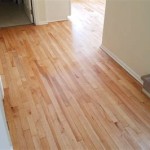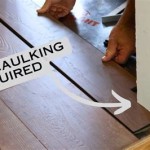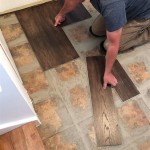Choosing The Right Underlayment For Your Laminate Flooring On Concrete
Installing laminate flooring over concrete requires a carefully chosen underlayment to ensure proper performance and longevity. The underlayment serves several essential functions, including:
- Moisture barrier: Protects the flooring from moisture rising up from the concrete.
- Acoustic insulation: Reduces noise transmission between floors.
- Thermal insulation: Provides warmth and comfort underfoot.
- Leveling: Compensates for minor irregularities in the concrete surface.
- Structural support: Distributes weight evenly, preventing damage to the laminate planks.
Types of Underlayment for Laminate Flooring on Concrete
There are several types of underlayment available, each with its unique properties and benefits:
1. Polyethylene Foam
A budget-friendly option that offers basic moisture protection, thermal insulation, and sound absorption. However, it may not provide adequate structural support.
2. Cork
A natural and eco-friendly choice that provides excellent acoustic and thermal insulation. It also offers some structural support and moisture resistance.
3. Rubber
A highly durable and waterproof option that effectively dampens sound and provides good structural support. It can be more expensive than other types of underlayment.
4. XPS Foam (Extruded Polystyrene)
A rigid and lightweight underlayment that offers excellent moisture protection, thermal insulation, and leveling capabilities. It is also resistant to compression.
5. Fiberboard
A composite material made from wood fibers or fiberglass. It provides good structural support, moisture resistance, and sound insulation. However, it may not be as durable as other types of underlayment.
Choosing the Right Underlayment
Consider the following factors when selecting an underlayment for your laminate flooring on concrete:
- Moisture level: If the concrete is prone to moisture, choose an underlayment with a high moisture vapor permeability (MVPR) rating.
- Acoustic needs: For rooms where noise reduction is important, select an underlayment with a high sound transmission class (STC) rating.
- Thermal insulation: For rooms that need additional warmth, choose an underlayment with a high thermal resistance (R-value).
- Structural requirements: If the concrete surface is uneven or the laminate planks are wide, opt for an underlayment with high structural support.
- Budget: Consider the cost of the underlayment in relation to your overall budget.
Installation Considerations
When installing the underlayment, follow these tips:
- Roll out the underlayment perpendicular to the direction of the laminate planks.
- Overlap the seams by 4-6 inches and seal them with underlayment tape.
- Trim any excess underlayment around the edges of the room.
- Allow the underlayment to acclimate to the room temperature for at least 24 hours before installing the laminate flooring.
By choosing the right underlayment and following proper installation techniques, you can ensure that your laminate flooring performs optimally and lasts for many years to come.

Best Underlayment For Laminate Flooring On Concrete

Best Luxury Vinyl Flooring Allfloors Trade Centre

Installing Laminate Flooring Over Concrete The Ultimate Guide Aa Floors

Underlayment For Vinyl Flooring Best Options Home Pros

Top 4 Underlayment Options For Your Floors Aa

How To Choose Underlay For Laminate Flooring Blog Floorsave

Best Luxury Vinyl Flooring Allfloors Trade Centre

What Is The Best Underlay For Laminate Wood Flooring Luxury

Choosing Subfloor For Hardwood Tile And Laminate Floors
The Best Underlayment For Every Type Of Flooring
See Also







